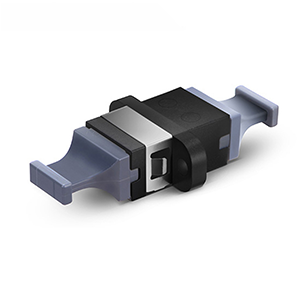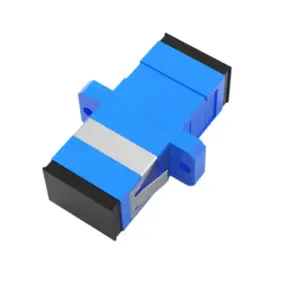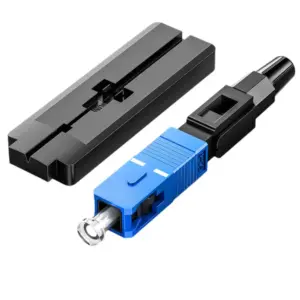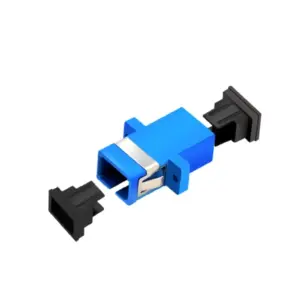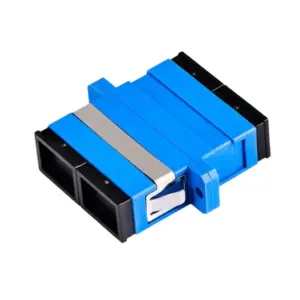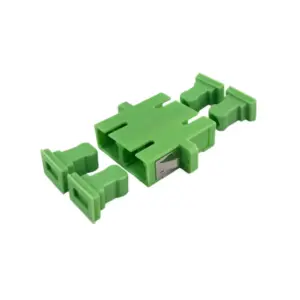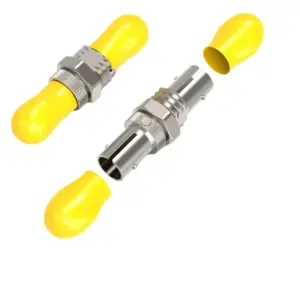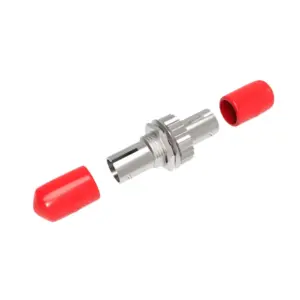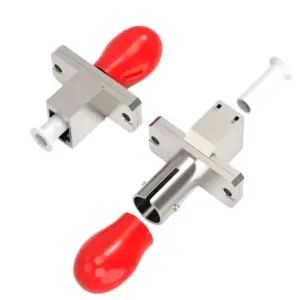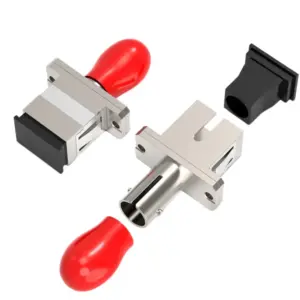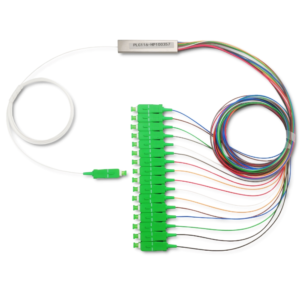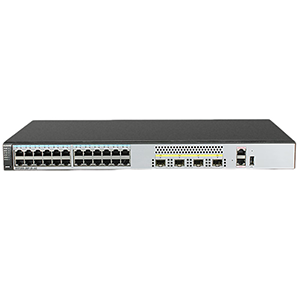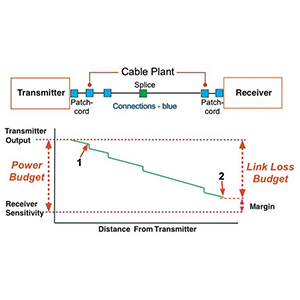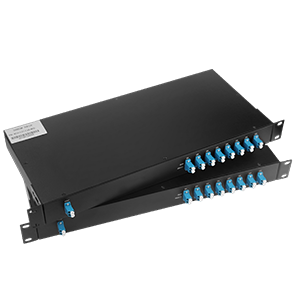Hello everyone! Today I want to share with you a device that plays an important role in the field of optical fiber communications-MPO optical fiber connector. As the demand for data transmission continues to grow, high-density fiber optic connections are becoming increasingly important, and MPO connectors can meet this demand. In this article, I will give you an in-depth understanding of the design, advantages and wide application of MPO fiber optic connectors. Let us explore the charm of MPO connectors and understand its excellent applications in different fields.
Overview of basic knowledge of optical fiber connector
Fiber optic connectors are devices used to connect optical fibers. Their role is to ensure that optical signals can be transmitted effectively and provide reliable connections.
Basic Principle: The basic principle of fiber optic connectors is to enable the transmission of optical signals from one fiber to another by precisely aligning and coupling the cores of the optical fibers. Connectors typically include a ferrule to maintain fiber alignment and have a precise core diameter. By aligning the two inserts with each other, the cores of the two optical fibers can be connected together to form a continuous light transmission path. The connector housing provides mechanical stability and protection.
In high-density optical fiber transmission, the importance of optical fiber connectors is self-evident. With the development of fiber optic communications and data centers, high-density fiber optic connectors have become critical for transmitting more optical fibers in limited spaces. They provide more fiber connections in a limited space, enable higher port density, and meet high-bandwidth demands.
There are many different types of fiber optic connectors, each with its own specific uses and advantages. Common fiber optic connector types include SC (Subscriber Connector), LC (Lucent Connector), ST (Straight Tip Connector), FC (Ferrule Connector), etc. These connectors differ in connection methods, physical structures, and applicable scenarios.
Before discussing MPO connectors further, understanding the basics of fiber optic connectors can lay the foundation for subsequent discussions, because MPO connectors are a special connector used for high-density fiber transmission with unique designs and uses. .
Overview of MPO connector design and structure
MPO (Multi-fiber Push-On) optical fiber connector is a connector used for high-density optical fiber transmission. It has a unique design and structure and can connect multiple optical fibers at the same time.
Design features and structure:
External structure: The exterior of the MPO connector usually consists of a rectangular shaped socket and a plug with a guide pin. There is an alignment structure between the socket and the plug so that the connector can be accurately aligned and inserted.
Internal components: The MPO connector contains multiple optical fibers inside, usually 12 or 24, arranged in one or two columns. Each fiber has an independent insert, including precisely aligned cores. Inserts are typically made of ceramic or plastic materials to provide precise alignment and protect the fiber.
Alignment structure: The alignment structure of MPO connectors usually uses guide pins and alignment structures to ensure correct alignment. The guide pin is the protrusion between the socket and plug that guides the plug into the socket correctly. Alignment structures are located inside receptacles and plugs to ensure precise alignment of each fiber.
High-density design and multi-core fiber transmission capabilities:
The main design goal of MPO connectors is to achieve high-density fiber optic connections and multi-core fiber transmission. By integrating multiple optical fibers into one connector, MPO connectors are able to provide more fiber connections in the same space, allowing for higher port density. For example, one MPO connector can connect 12 or 24 optical fibers at the same time, which greatly reduces the number of connectors and space required compared with traditional single-core connectors.
The MPO connector’s multi-core fiber transmission capabilities make it suitable for applications that require the transmission of multiple fibers simultaneously. For example, in data centers, MPO connectors can be used to connect servers and switches for high-speed data transmission to meet high bandwidth requirements. In addition, MPO connectors can also be used in applications such as fiber channels, fiber optic storage networks, and fiber optic transmission systems to provide high-density and high-performance fiber optic connections.
So MPO optical fiber connector achieves high-density optical fiber connection and multi-core optical fiber transmission capabilities through its design features and structure. It is an ideal choice in scenarios that require high port density and high-bandwidth transmission, such as data centers, storage networks, and optical fiber transmission systems.
What are the advantages of MPO connector
MPO fiber optic connectors have the following unique advantages compared to other types of connectors:
High-density connection capability: MPO connector, with its multi-core design, can connect multiple optical fibers at the same time in one connector, such as 12 or 24 optical fibers. Compared with traditional single-core connectors, MPO connectors can provide more optical fiber connections in the same space and achieve higher port density. This is important for applications that require large amounts of fiber to be transported within a limited space, such as data centers and Fiber Channel.
Quick installation features: MPO connectors use pre-assembled optical fibers and inserts, making the installation process easier and faster. Compared with installing individual connectors one by one, MPO connectors can be inserted into multiple optical fibers at the same time, thus greatly saving installation time. This is particularly important in scenarios that require large-scale deployment of fiber connections, such as fiber cross-connects in data centers.
High-bandwidth applications: MPO connectors are important in high-bandwidth applications. As data center and network demands increase, so does the need for high-speed, high-density fiber optic transmission. MPO connectors meet these needs and provide high-speed, reliable fiber optic connections. They are widely used in high-performance computing, cloud computing, big data transmission and other scenarios that require large-scale data transmission.
Flexibility and scalability: MPO connectors have good flexibility and scalability. They can be customized according to requirements such as different fiber types (single mode or multimode), fiber quantity and connection methods. This makes MPO connectors suitable for a variety of applications and compatible with different devices and systems.
Compared with other types of connectors, MPO fiber optic connectors have high-density connection capabilities, fast installation features, the ability to adapt to high-bandwidth applications, as well as flexibility and scalability. They play an important role in data centers and high-bandwidth applications, providing reliable and efficient solutions for large-scale optical fiber transmission.
What are the application fields of MPO connector
MPO fiber optic connectors are widely used in many fields due to their high-density connection capabilities and adaptability. The following are application cases of MPO connectors in different application fields:
Data centers: Data centers need to handle large amounts of data transfers and high-density connections. MPO connectors can be used for fiber optic patch cords, fiber optic cross-connects, and fiber optic channels within data centers to achieve high-speed data transmission and rapid deployment. They provide high port density, reduce rack space usage, and simplify fiber cabling management.
Cloud Computing: Cloud computing environments need to handle large-scale data transfers and fast network connections. MPO connectors can be used to connect high-speed fiber optic links between servers, switches and storage devices. They can provide high-bandwidth, low insertion loss and high-reliability connections to meet the high performance and scalability requirements of cloud computing environments.
Communication network: MPO connectors are used for optical fiber transmission and network expansion in communication networks. For example, in optical fiber communication systems, MPO connectors can be used in optical fiber patch cords and optical fiber distribution racks to achieve rapid connection and transmission of optical fiber signals. In addition, MPO connectors are also widely used in fields such as fiber optic storage networks (SAN) and fiber optic distributed antenna systems (DAS).
Video transmission: MPO connectors are also used in the field of video transmission. For example, in high-definition video production and broadcasting, MPO connectors can be used for parallel transmission of multiple optical fibers to achieve the transmission and distribution of high-speed video signals.
Generally speaking, MPO fiber optic connectors are widely used in many fields such as data centers, cloud computing, communication networks, and video transmission. They play an important role in high bandwidth, high-density connectivity and rapid deployment. As data demands increase and network technology develops, MPO connectors will continue to play an important role in high-speed data transmission and fiber optic network expansion.
Summary
As an ideal choice for high-density optical fiber transmission, MPO fiber optic connectors demonstrate outstanding performance in various fields with their unique designs and advantages. Its high-density connectivity and quick installation make it the first choice in data centers, cloud computing and communications networks.
When you choose MPO connectors, you will get efficient and reliable multi-core optical fiber transmission capabilities to meet the requirements of high-speed data transmission and optical fiber network expansion. Whether you are building a new data center or upgrading an existing network, MPO fiber optic connectors can provide you with superior connection quality and high-density transmission capabilities. If you have more questions about MPO connectors or need more details, please feel free to contact us.
MPO Connectors FAQ
The number of fibers in MPO connectors can be customized based on requirements, but common configurations include 8, 12, 24, and 32 fibers.
MPO connectors offer several advantages including higher density, faster installation, reduced space requirements, and improved cable management in high-density environments such as data centers.
Unlike traditional single-fiber connectors such as SC or LC connectors, MPO connectors can accommodate multiple fibers in a single connector, allowing for higher data transmission capacity in a smaller footprint.
MPO connectors are commonly used in applications such as data center interconnections, high-speed backbone connections, fiber-to-the-desk (FTTD) installations, and optical fiber network deployments.
MPO connectors have different polarity configurations (Type A, Type B, and Type C) which ensure proper alignment of fibers for transmitting and receiving signals. Proper polarity is crucial for maintaining signal integrity in multi-fiber connections.
Cleaning MPO connectors involves using specialized cleaning tools such as MPO cleaning cassettes or swabs to remove dust, dirt, and debris from the connector end faces. Regular inspection and cleaning help maintain optimal performance.
MPO connectors can be reused if they are undamaged and properly cleaned and inspected before each reuse. However, repeated mating and unmating can eventually lead to wear and degradation, affecting performance.
Yes, there are different types of MPO connectors designed for specific applications and configurations. These include standard MPO connectors, MTP® (MPO/MTP®) connectors, and angled-polished MPO connectors, among others.
When choosing MPO connectors, factors such as connector type, fiber count, polarity, insertion loss, return loss, and compatibility with existing infrastructure should be considered to ensure optimal performance and compatibility with the intended application.

